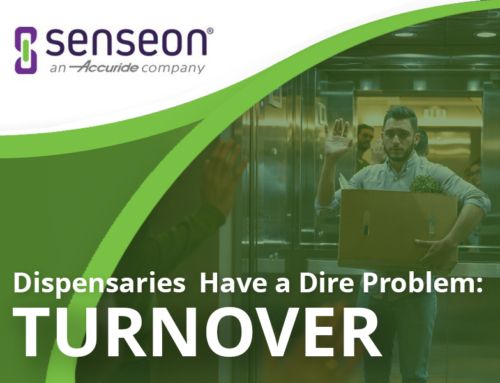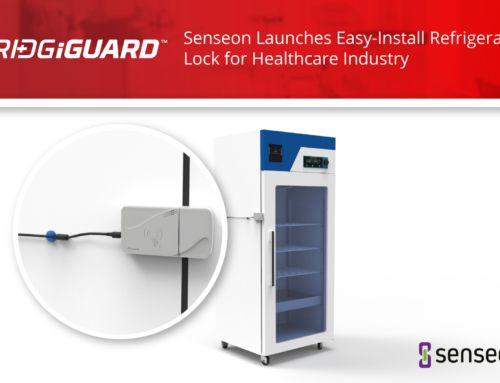According to a new article from Security Today, increasing concern about loss prevention has many commercial security buyers looking to upgrade to access control systems for cabinets that hold valuable items, such as merchandise, medications and sensitive documents.
Increasing concern about loss prevention has many commercial security buyers looking to upgrade to access control systems for cabinets that hold valuable items, such as merchandise, medications and sensitive documents. As a result, manufacturers, dealers, and integrators of access control systems are beginning to recommend these modern solutions to retail, jewelry, healthcare, and financial institutions.
Indeed, smart electronic locking systems offer significantly more reliable and durable access control options than the mechanical locks and metal keys they’re replacing. Innovative locking solutions can be up to four times stronger than traditional CAM locks. Also, hidden access control locks prevent would-be thieves from knowing how they are locked. Substituting smart cards, fobs or wristbands for hard keys also eliminates telltale keyholes.
In addition to all their security benefits, hidden electronic cabinet-locking systems promise many other business advantages.
Smart locks offer important opportunities to streamline operations, beautify interiors, and enhance the experiences of those who interact with commercial establishments. In other words, they deliver significant ROI.
How can a new kind of locking system have such transformative power?
Consider that traditional locks and keys have changed very little in 150-plus years while business requirements, customer and user expectations, and technological possibilities have evolved dramatically.
I continually hear from commercial establishments that the 19th century’s security solution poses obstacles and no longer meets their needs in productivity- and customer-driven economy. Some examples of these complaints:
- Mechanical locks are unreliable, cumbersome, difficult and time-consuming to install, subject to callbacks, costly to repair or replace, and limiting to design and function.
- Traditional locks expose commercial establishments to theft risks when cabinet drawers or doors are inadvertently left unlocked.
- Metal keys frequently are lost, stolen, broken or duplicated, causing serious replacement and management burdens.
- Commercial establishments lose precious time – and can lose customers’ attention, and sales – while hunting for keys to unlock cabinets or retrieving items from a back room.
- Customers find locks and keyholes unsightly, limiting design potential and functionality of the cabinet.
- Nearly half (46%) of consumers say the retail process takes too long, 32% don’t like waiting for a salesperson to unlock a cabinet to show them merchandise, and 17% are uncomfortable when a salesperson uses a key, according to the 2014 UCLA Executive MBA Retail Consumer Study.
How can electronic access control locks make a difference?
- A best-in-class electronic access control locking system lets users say goodbye to the limitations of traditional locks and keys.
- End users gain greater protection, as well as superior efficiency, functionality, flexibility, aesthetics and an enhanced customer experience.
- Innovative furniture-locking systems enable a sales associate to show merchandise on the sales floor more efficiently, a nurse to dispense medications on the spot, a bank teller to hand customer cash instantly, or a hotel housekeeper to safeguard but also easily access cleaning supplies.
- Commercial interiors become more customer and user-friendly. Cabinet fronts can be sleek, unhindered by locks or keyholes. Auto-open, easy-close and touch-release features make accessing cabinet contents efficient, quiet and seamless.
- As a result, people have shorter, more enjoyable experiences with commercial establishments. These interactions offer opportunities for higher revenue and customer loyalty for brick-and-mortar stores, banks, and hotels, as well as improved patient relations for healthcare institutions.
Electronic locks in action:
Senseon Secure Access, a commercial-grade electronic access control locking system, uses radio-frequency identification (RFID) and is easy to install and use. This electronic locking system integrates with other kinds of access control systems and with virtually any new or existing cabinetry in nearly any commercial environment. A tap of a smart card, fob or wristband near an invisible reader opens a cabinet door or drawer.
How to get in on the smart locking trend?
Manufacturers, dealers and integrators of security systems can increase their competitive advantage by introducing electronic locking systems to their product lines – even before clients inquire about them.
Review options that complement and augment your existing offerings and fit your clients’ needs.
Your new, state-of-the-art capability will show your clients that you are on the cutting edge in helping them solve their business problems, and they will thank you for it.
This post was first published on Security Today. Read the original blog post here.






